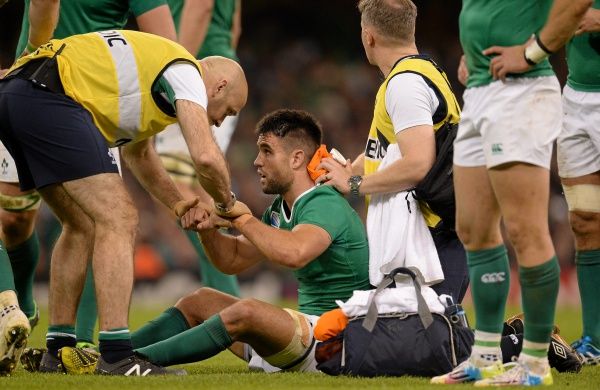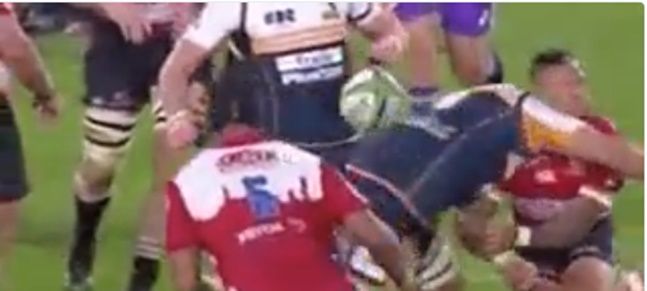World Rugby chief executive Brett Gosper has called for more yellow and red cards in rugby in an increased effort to clamp down on dangerous and reckless play.
Gosper said that World Rugby are trying to lower the tackle height so that they can reduce the incidence of concussion and injury before a World Rugby meeting in Sydney back in September and he reiterated that harsh punishment must be used to try and change behaviour.
“The cards are there to change behaviour,” Gosper told the Daily Telegraph.
“They only continue to be a problem if behaviour does not change. The only way you can get player behaviour to change is to sanction with red cards and actually, we have probably not seen enough of it.
“I would say in many ways we have probably not been hard enough. We have not had the behaviour change that we are seeking yet, so we have to continue in that vein.”
Earlier this year, World Rugby introduced new tackle laws that were trialed at the World Rugby Under 20 Championship where a post-match sanctioning system was introduced where any high tackle penalty, any head injury, any high tackle that was missed on the pitch and any head contact was reviewed by a citing commissioner who would then determine if a high tackle warning needed to be issued to an offending player.
Two high tackle warnings in the U20 tournament would result in a one match suspension as World Rugby aimed to discourage tacklers from tackling in an upright position.
“We wanted to get the players lower and we knew that a player who tackled lower was less at risk than a player who tackled higher,” said Ross Tucker, a World Rugby research consultant.
“The first paradox is that lowering the height of the tackle doesn’t only protect the ball carrier but it actually protects the tackler.
“Our research had shown that the tackler was more at risk than the ball carrier. The directive was applied because we saw that there was a 54% increase in high tackle penalties and a 41% increase in yellow cards, but even after those increases, we don’t believe they’d be frequent enough or severe enough to actually change the behaviour of the player the way we want.
“We put that back to the experts and the coaches and the officials and what they said was don’t ask the referee on the field to take all of the onus on himself.
“Can we not create some system after the match – a post-match sanction process – that punishes the behaviour that our research recognises as being dangerous.
“That behaviour is an upright player and we have got the evidence that shows if you tackle in an upright body position the risk to yourself and your opponent is much higher than if you bent at the waist.
“That’s the behaviour we want; we want tacklers bent at the waist. At the U20 championships coming up in May we will trial a post-match sanction where any high tackle penalty, any head injury to either player, any high tackle that was missed on the pitch but was picked up after the match, and any head contact will be reviewed by a citing commissioner who will ask one question.
“They will ask ‘is the tackler upright or are they bent at the waist?’
“If the tackler is upright they will receive a high tackle warning and if he’s bent at the waist no problem. They were in the safe position so we are happy with the decision on the field.
“If they’re upright- high tackle warning – because that’s the type of behaviour we want to move the player away from.”






























